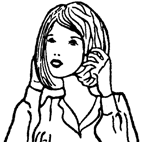Last Sunday an afternoon of concerts was held at the Round Chapel in Clapton to commemorate what would have been the 88th birthday of composer John White. White, who died in January, is one of those figures of the British avant-garde whose work was, for certain generations, often more inferred from others than heard directly. That was certainly my experience when growing up in Australia and I suspect it wasn’t too different elsewhere in the Anglosphere, where a few glimpses could be deduced from reading about some tracks on out-of-print LPs issued on the Obscure label, or possibly even hearing them. Living in the UK helped to expand on this narrow view from half a century ago but even so, when hearing a selection of his music at Music We’d Like To Hear in 2022 I noted that his short, often oblique compositions condemned him to “being regarded in much the same way as an outsider artist”. The Round Chapel audience skewed old, peppered with original longhairs and a handful of soft-spoken Maoists up from Surrey for the day.
Hearing this much of White’s music in a day helped to understand how weak my understanding is of his art. Selections from his hundred-odd Piano Sonatas appeared throughout the day, mostly played by Dave Smith. These ranged from the benignly self-undermining miniatures I’d associated with his overall style, to some more generous take-offs on various genres (these were played by Mary Dullea) and one stark, early Sonata of brusquely contrasting intervals played by Tim Parkinson. The creative impulse was pulled one way then another throughout the day, alternating between more conventionally emotive music for plays or cosier chamber works, and more abstract works like the Concert Duos from the early 1970s, originally written for the John White / Christopher Hobbs tuba and piano duo. Then again, even those supposedly colder pieces were built upon dance steps or concert-hall favourites, so that White was always tweaking his sentimental influences in some idiosyncratic way, with the distinguishing factor being the degree to which the work’s origins could be detected on the surface.
Then there’s the comedy. Parkinson and Catherine Kontz performed White’s 2014 piece Wine Connoisseur’s Shoot Out, a cheerfully inconsequential piece for percussive objects (including wine bottle), ditzy stylophone breaks and readings of descriptions from a wine catalogue. It was very British in the way its harmless eccentricity raised questions about satire, arte povera and Dada without the slightest interest in spelling anything out beyond the audience’s immediate enjoyment. It makes Satie – one of White’s chief influences – seem pointed. It also shows why White remained a marginal figure, as he never really mellowed into a sufficiently safe figure with an institutionally acceptable idea of fun (as the Poor Fart Harmony tape from 1988 demonstrated when played later in the day). Instead of composing soundtracks for lottery-funded movies, he was performing live sets with homebrew electronics in the backrooms of pubs. John Lely, frequent collaborator with White in electronic gigs, played a concentrated work with an off-kilter array of lo-fi objects as a tribute, as did Greta Kalteisen, Andrea Rocca and Richard Sanderson with a revival of White and Hobbs’ battery-operated electronic ensemble Live Batts!! Of course, there were also the Machines – Newspaper Reading Machine, Drinking and Hooting Machine, with Autumn Countdown Machine to end the event – which were highlights as usual, perhaps through their simple ingenuity, or perhaps because everyone’s appreciation of White is oriented upon those old LPs after all.
